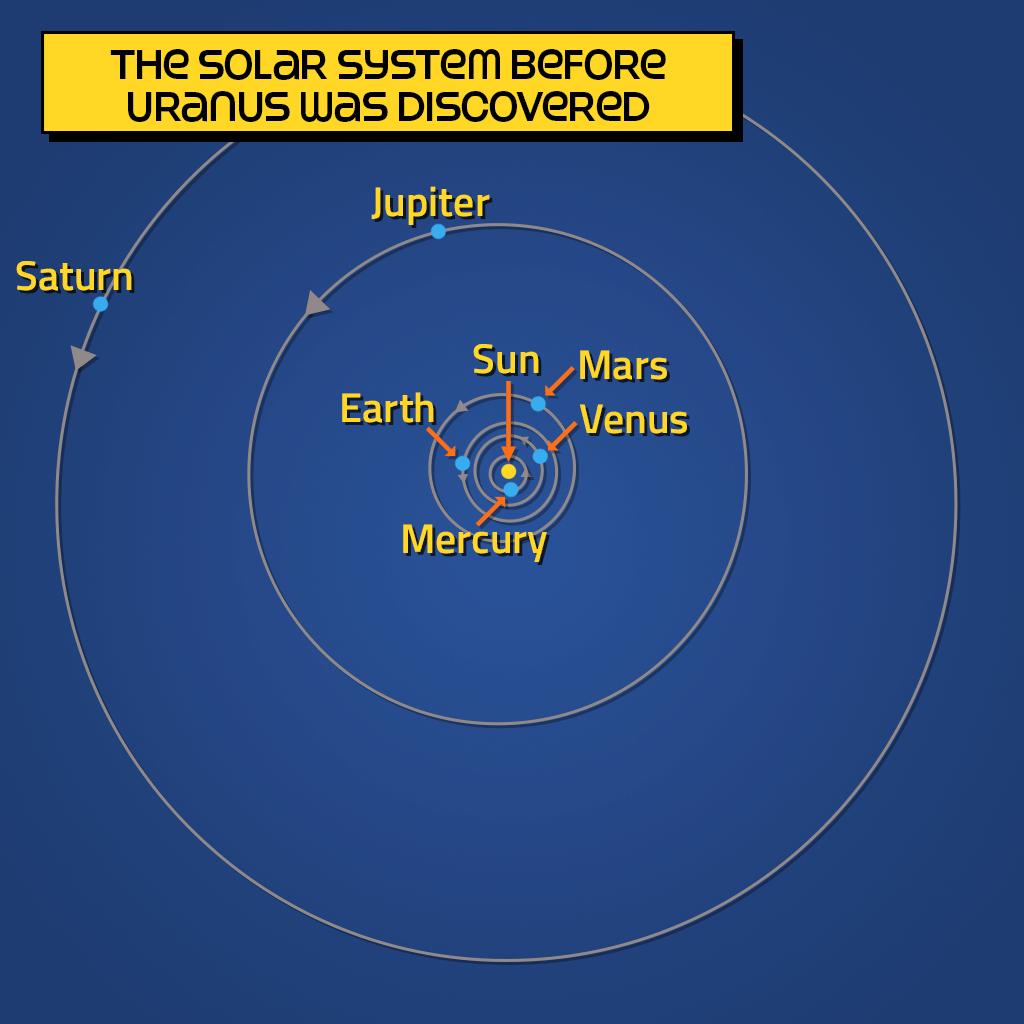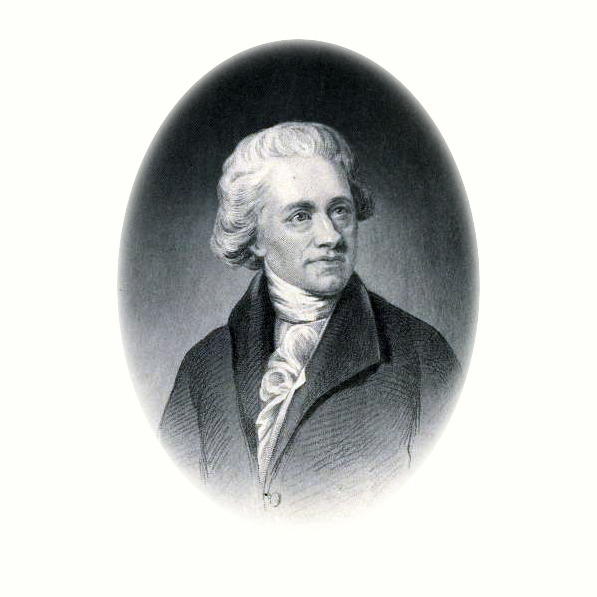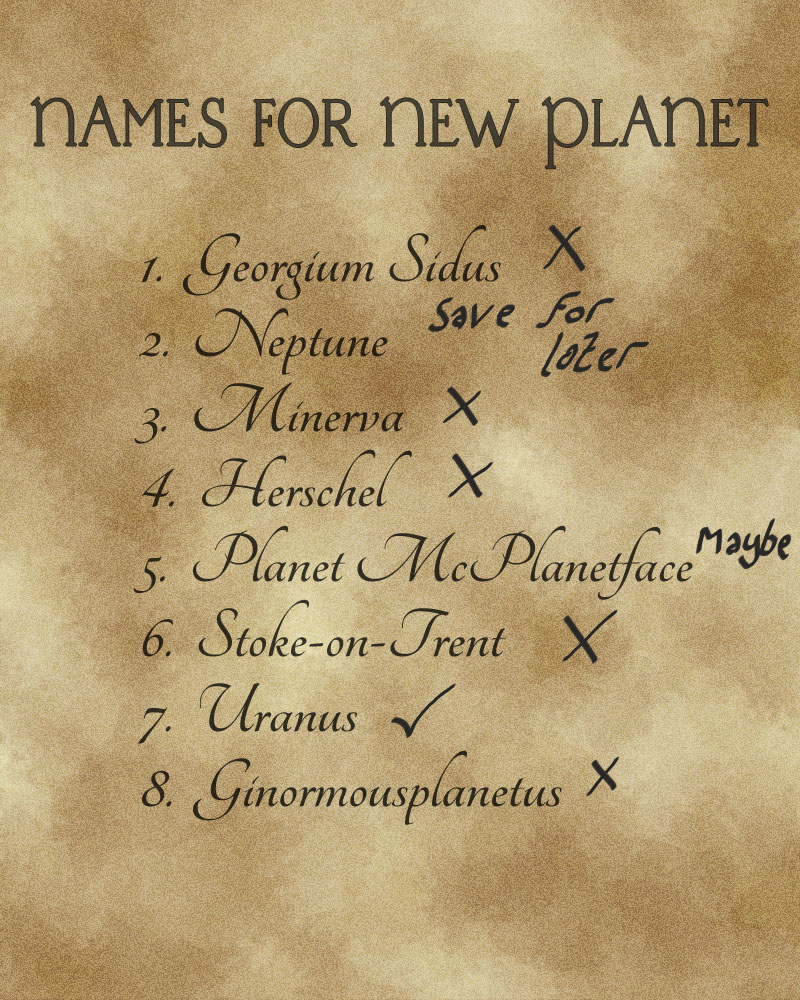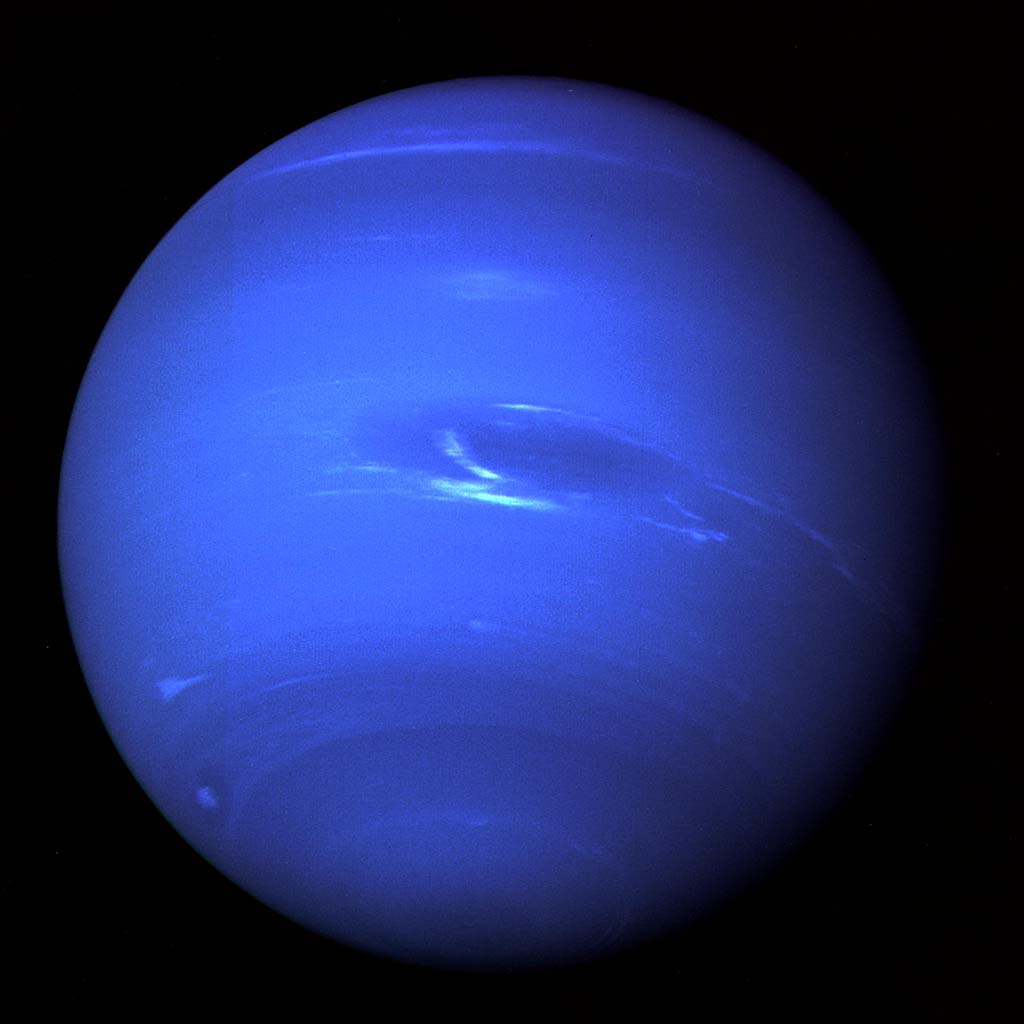Discovering Uranus
Uranus was discovered on 13th March 1781 by the astronomer William Herschel and became the seventh planet in the solar system. As Uranus is so far away and only appears as a faint object, it isn't easy to see at all from Earth. It was only after astronomers were able to look further out into space with telescopes that planets like Uranus could be spotted more easily. Although William Herschel is recognised as the discoverer of Uranus, he wasn't actually the first person to spot it. He also didn't call it Uranus. He called it Georgium Sidus. It became known as Uranus later on.

Before Uranus was discovered in 1781, the solar system was considered to contain six planets. One of those is Earth and the others are the planets that can easily be seen from Earth - Mercury, Venus, Mars, Jupiter and Saturn. As they have been known since ancient times, nobody is recognised as discovering them. The ancient Romans believed that the planets represented their gods and gave them the names that are still in use today.
Mercury, Venus, Mars, Jupiter and Saturn might look a lot like bright stars but can be identified as planets by the way they travel across the sky. This is because planets are much closer to Earth than stars are. Planets are located in the solar system but stars are located billions of miles away from the solar system. The only star situated in the Solar System is the Sun.
Saturn was considered to be the most distant planet in the Solar System before the discovery of Uranus. Uranus is about twice as far away as Saturn is from Earth; it's also half as big and moves slower in its orbit around the Sun. This makes it much harder to view from Earth and much harder to recognise as a planet. It is just about possible to see Uranus without binoculars or a telescope, but this is only if the sky is very dark and very clear and you know where to look.


William Herschel was born in 1738 in Hanover in what is now Germany. He moved to England at the age of 19 and worked as a musician and composer but developed an interest in astronomy. In 1772 he moved into a house in the city of Bath with his sister Caroline. Shortly afterwards, he began building his very own telescopes.
Using his fancy new telescopes, Herschel spent a lot of his time looking at stars and listing them. He was particularly interested in finding double stars but on the evening of 13th March 1781, he spotted something that didn't quite look or behave like any of the other stars he was used to seeing. He made further observations of it over a number of nights, noticing how its position gradually moved across the sky differently to the stars. This confirmed that he wasn't actually looking at a star but something much closer. His initial belief was that he'd found a comet, but other astronomers suggested that it could be a planet. The object became the first new planet to be discovered in the solar system.
In 1787, six years after discovering his planet, William Herschel also discovered its two largest moons. His son, John Herschel, chose the names for them 65 years later, calling them Titania and Oberon. Uranus is now known to have 27 moons.

After discovering his new planet, William Herschel was asked to pick a catchy name for it. So he called it George! In a seemingly obvious attempt to impress King George III of Britain, Herschel decided to name it Georgium Sidus, or the Georgian Star, in his honour. The gesture seemed to work as Herschel became the King's Astronomer and was awarded £200 a year to look at the stars for him. Later in life, Herschel was knighted and became known as Sir William Herschel Herschel explained that he named the planet after King George so future generations know that it was discovered during his reign. Of course, for that to work, you'd need to know when King George III reigned! Who knows stuff like that?
Not everyone was happy with this name. Some astronomers disliked that it wasn't named after a mythological god like the other planets. Countries that viewed Britain as a rival nation were reluctant to use the king's name. Some, such as France, referred to the new planet as Herschel instead.
Despite being proposed shortly after its discovery, Uranus was not commonly referred to by that name until around 1850. The British continued to call it the Georgian Planet, but eventually caved in and adopted the name Uranus. Uranus is the only planet in the solar system to be named after a Greek god. The rest are named after Roman gods. Clever!
Uranus is also the only planet to have its moons named after characters in works of literature. They get their names from characters featured in the works of William Shakespeare and Alexander Pope. The moons of all other planets are named after mythological figures.
Historical records indicate that Uranus was observed multiple times before it was identified as a planet. Hipparchus, a Greek astronomer over two thousand years ago, recorded an object in a location where Uranus would have been at the time and catalogued it as a star. Later, after the invention of the telescope, some astronomers made observations of Uranus but did not recognize it as a planet, mistaking it for a star. William Herschel eventually discovered Uranus from his back yard, but let's take a look at those who missed the opportunity to identify the planet.
John Flamsteed (1646 - 1719)
In 1675, English astronomer John Flamsteed was appointed by King Charles II to be the first Astronomer Royal. His main task was to record the positions of stars accurately. In December 1690, he catalogued an object as 34 Tauri, thinking it was a star. After Uranus had been correctly identified as a planet following Herschel's discovery, astronomers reviewing Flamsteed's observations realised that the object that he'd catalogued as 34 Tauri in 1690 was actually Uranus!
Tobias Mayer (1723 - 1762)
German astronomer Tobias Mayer recorded a sighting of what he thought was a star in 1756. The observation musn't have interested him much as he didn't look for it again. Maybe if he had, he'd have realised he was actually looking at a planet! Mayer was more well-known for his studies of the Moon.
Pierre Le Monnier (1675 - 1757)
French astronomer Pierre Le Monnier made many observations of Uranus but failed to recognize it as a planet. He is thought to have made up to six observations alone in 1769, including some on consecutive nights. Some attribute his oversight to Uranus appearing stationary in the sky at that time, while others blame his disorganised and messy observations. Le Monnier was known for being grumpy and argumentative so probably wouldn't have been too pleased when he learned that Herschel had discovered the planet he had been observing years earlier.

Herschel's discovery encouraged astronomers to look even deeper into space to try to find other worlds. The discovery of Uranus later led to the discovery of Neptune in 1846. Neptune was found not by observing the planet, but by observing the effect its gravity had on Uranus and calculating its location. Neptune's discovery then led to the discovery of Pluto in 1930. Even today, many new small worlds are being discovered in the Solar System and even in orbits around other distant stars.
The discoveries of Uranus and two of its moons were not Herschel's only achievements. He also discovered two moons orbiting Saturn and is said to have invented the word asteroid to describe small objects in space. Like many other scientists of the time, he also believed that the Solar System was full of life and that all of the planets and even the Sun were inhabited! Despite his other achievements and theories about the universe, Herschel will always be remembered for finding Uranus and therefore becoming the first person ever to "discover" a planet.
Visit Herschel's Home!
The house that William Herschel lived in when he discovered Uranus still stands in the city of Bath. It is now the Herschel Museum of Astronomy and is open for visitors. It features rooms restored to their Georgian glory to show what they would have been like when William and his sister Caroline lived there, and exhibits taking you through the history of astronomy. Visit the museum's website here to find out more and maybe even book tickets!





